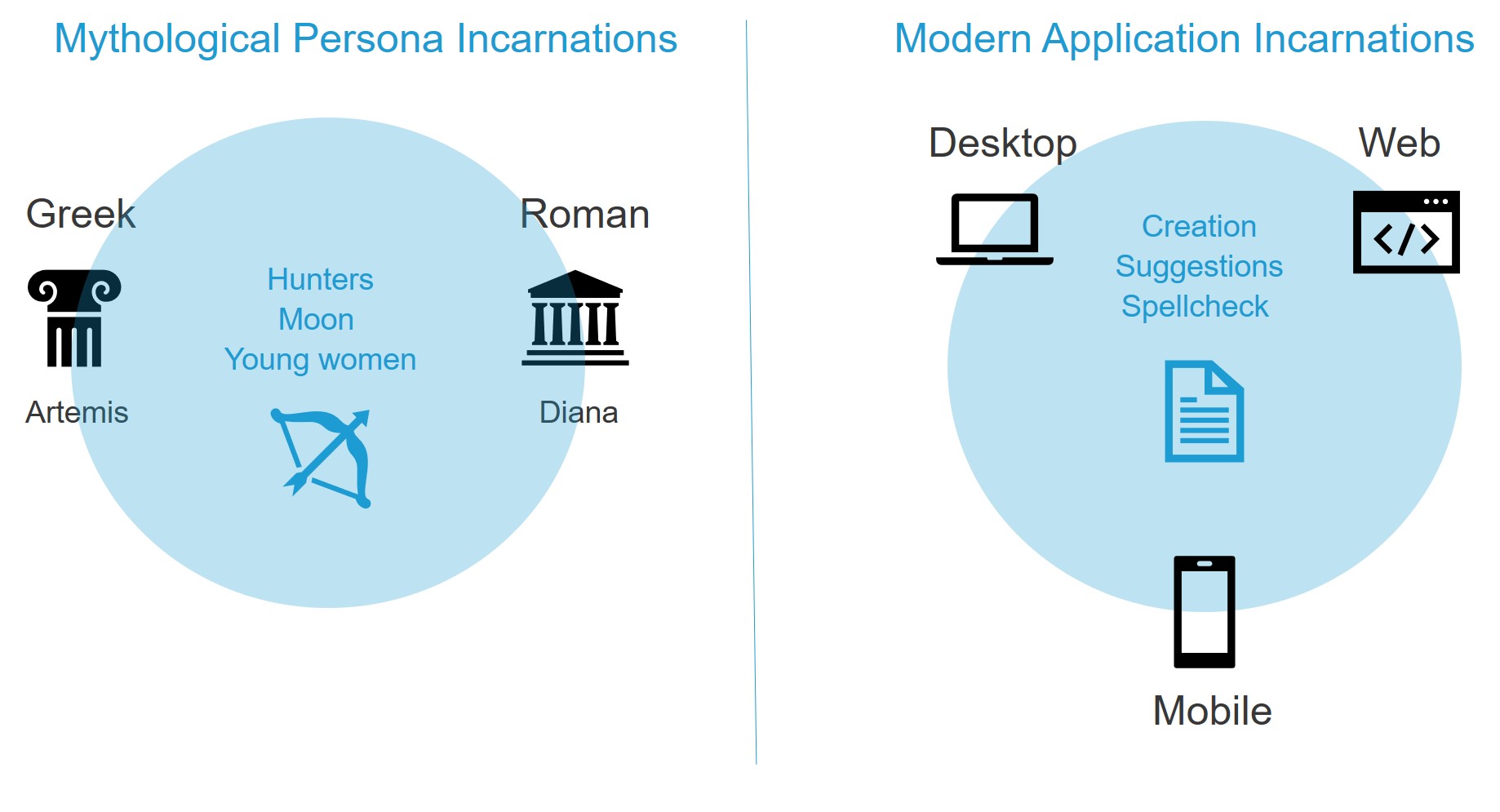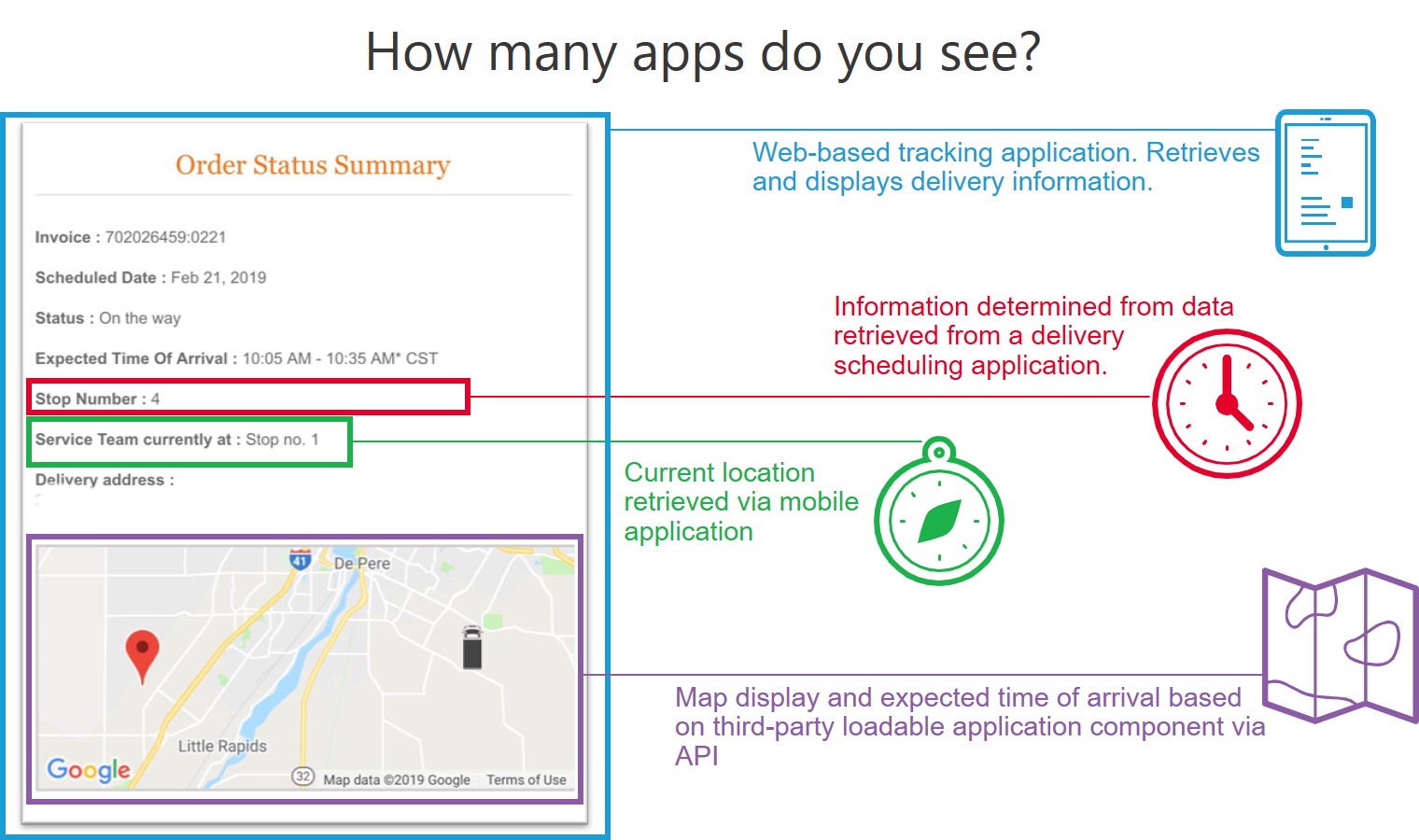우리의 관점을 현대화하다: 애플리케이션 대 경험
조직이 디지털 전환 여정을 진행하고 데이터와 분석에 더 많이 의존하기 시작하면서 애플리케이션이 무엇이고 무엇이 아닌지에 대한 이해를 조정해야 할 것입니다.
고대 신화는 매력적이다. 글쎄요, 제 생각에는 그렇습니다. 저는 특히 그리스와 로마의 종합적 신화에 매료되었습니다. 헬레니즘(후기 그리스) 신화는 초기 그리스 신들이 어떻게 로마의 신들과 같은 모습으로 변모했는지를 보여주는 훌륭한 사례입니다. 로마와 헬레니즘의 신인 사냥꾼 디아나는 신화적으로 초기 그리스 여신 아르테미스와 연관이 있습니다. 그녀의 이름은 다르지만 기능적으로는 동일했습니다.
동일한 인물이 여러 가지 모습으로 나타나는 현상은 다른 신화에서도 분명히 드러납니다. 근본적으로 각각의 화신은 기존 페르소나의 새로운 얼굴일 뿐입니다.
디지털 세계에서도 비슷한 현실이 존재합니다. 우리가 "애플리케이션"이라고 부르는 것은 종종 기존 기능의 구체화입니다.
현존하는 예로서의 Microsoft Word
우리는 애플리케이션을 일반적으로 비즈니스 기능과 관련된 단일 구조로 생각해 왔습니다. Microsoft Word는 워드 프로세싱에 초점을 맞춘 애플리케이션입니다. 한때는 클라이언트-서버 애플리케이션으로 발전한 모놀리스 형태였으며 궁극적으로 웹 기반 애플리케이션으로 확장되었습니다.
하지만 다양한 건축적 구현으로 이 기능을 구현했음에도 불구하고 비즈니스 기능이 변경되지 않았다는 점에서 여전히 단일한 "응용 프로그램"입니다.

소비자들은 반드시 그런 식으로 보지는 않습니다. 이는 단일 애플리케이션이며 데스크톱, 휴대폰, 웹 등 어디에서 사용하든 동일한 기능을 제공해야 합니다. 아키텍처 구현과 관계없이 모든 구현에서 인터페이스가 일관성을 유지하는 것이 중요합니다.
이제 신화적 비유로 돌아가서, 만약 제가 고대 헬레니즘 세계를 여행하는 그리스 여행자였다면 - 아마도 알렉산더 대왕의 발자취를 따라가고 있을지도 모릅니다 - 저는 다이애나 신전에 들러서 아르테미스 신전과 비슷한 경험을 할 수 있을 거라고 기대할 수 있을 겁니다. 그녀는 여전히 사냥꾼이고, 여전히 같은 영역을 책임지고 있으며, 결국 가장 큰 차이점은 그녀의 이름입니다.
문서 작업을 위해 웹에서 데스크톱으로 전환할 때도 마찬가지입니다. 저는 익숙한 경험을 했습니다. 이 애플리케이션은 모든 플랫폼에서 기본적으로 동일하게 작동합니다.
제가 "응용 프로그램"이라고 말한 것을 주목하세요. 소비자의 눈에는 그 애플리케이션이 어떻게 패키징되고, 배포되고, 전달되든 상관없이 동일한 애플리케이션이기 때문입니다. 기술적 관점에서 보면 Microsoft Word를 구성하는 애플리케이션은 여러 개가 있지만, 사용자 경험 관점에서 보면 단 하나 뿐입니다.
그래서 뭐?
기업이 디지털 혁신을 진행하면서, 기술도 함께 발전하는 모습을 보게 될 것입니다. 그러한 변화 중 하나는 애플리케이션을 정의하는 방식, 그리고 이를 통해 애플리케이션을 운영하고 보호하는 방식이 될 것입니다.

이 시각화는 우리가 운영하는 디지털 현실을 상기시켜줍니다. 즉, 사용자 경험은 단일 애플리케이션이 아니라 여러 애플리케이션의 통합이라는 것입니다.
사용자는 자신의 경험 이 수많은 애플리케이션과 앱 보안, 전송 기술에 의존한다는 사실을 신경 쓰지 않으며, 신경 쓸 필요도 없습니다. 사용자는 해당 앱이 다양한 클라우드, 데이터 센터 및 엣지 위치에 호스팅된 맞춤형, 기존 및 최신 버전이 혼합되어 있을 수 있다는 사실에 관심이 없으며, 신경 쓸 필요도 없습니다.
사용자에게 있어서 현실은 디지털 경험 입니다. 경험은 해당 응용 프로그램과 지원 기술의 합계보다 더 큽니다.
그럼에도 불구하고, 우리는 여전히 고객과 비즈니스에 더 잘 부합하기 위해 "애플리케이션"을 구성하는 아키텍처 구조를 구별할 수 있어야 합니다. 두 가지 모두 뛰어난 디지털 경험을 제공하기 위해 서로 맞물리고 상호 운용되어야 하는 수많은 작동 부분을 보지도 않고 반드시 신경 쓰지도 않습니다.
기업에서 "애플리케이션"이라고 말할 때는 디지털 경험을 의미합니다. 이는 백엔드부터 전달 및 보안 기술, 프런트엔드 인터페이스까지 해당 애플리케이션을 구성하는 모든 것을 의미합니다. 사용자 경험에 영향을 미칠 가능성이 있다면, 그것은 애플리케이션의 일부입니다.
연례 조사 에서 발견한 실망스러운 사실 중 하나는 조직의 거의 1/4(24%)이 기존 애플리케이션을 확장(현대화)하는 구성 요소의 상태 및 성능과 관련된 SLA를 적용하지 않는다는 것입니다. 즉, 기존의 기존 애플리케이션과 연동되는 모바일 앱을 구축했더라도(아마도 핵심 비즈니스 기능을 구축했더라도) 조직은 반드시 모바일 앱의 성능에 관심을 두지 않는다는 뜻입니다.
모바일 앱은 종종 사용자가 회사에 대해 가지는 첫 번째 디지털 인상이며, 모바일 사용자는 성능이 좋지 않은 경험을 한 번만 해도 앱을 삭제하는 경향이 있다는 사실을 감안할 때 이는 불안한 생각입니다.
궁극적으로 우리는 "애플리케이션"에 대한 이해를 고객 관점에 맞춰 바꿔야 하며, 오늘날 애플리케이션은 실제로 경험을 만드는 워크플로라는 점을 인식해야 합니다. 즉, 전체적인 구성으로 모니터링하고 측정하는 것 외에도 개별적으로 모니터링하고 측정해야 하는 여러 가지 통합되고 조율된 워크로드가 필요하다는 의미입니다.
"애플리케이션"이 경험 이라는 점을 인식하는 것은 경험을 개선하고 디지털 전환 여정의 성공을 보장하는 데 큰 도움이 됩니다.
